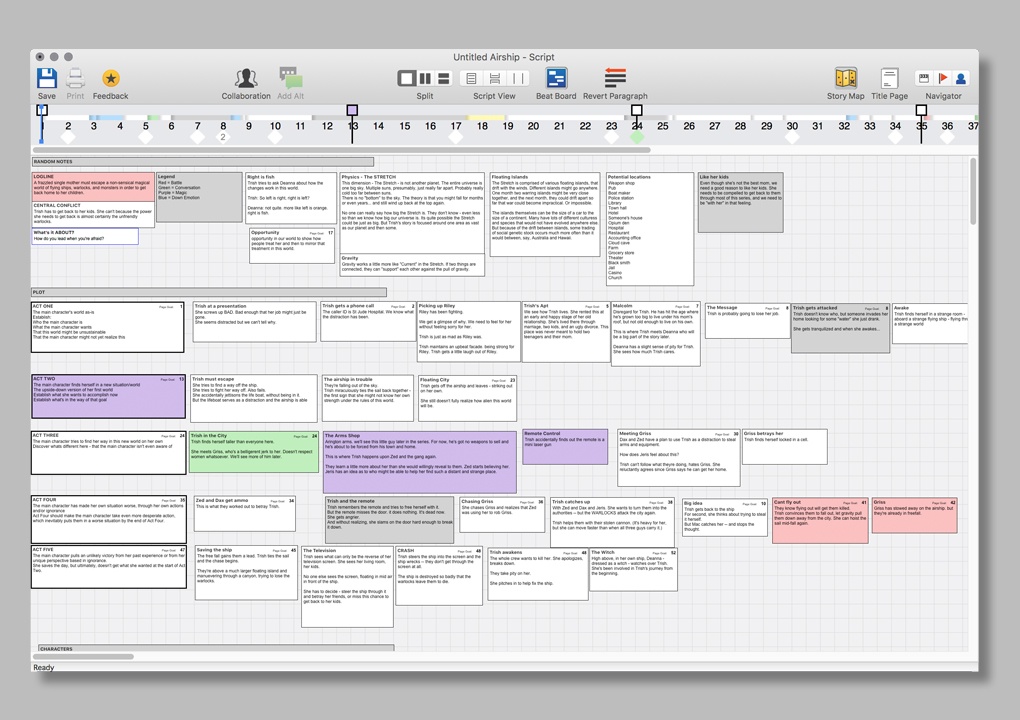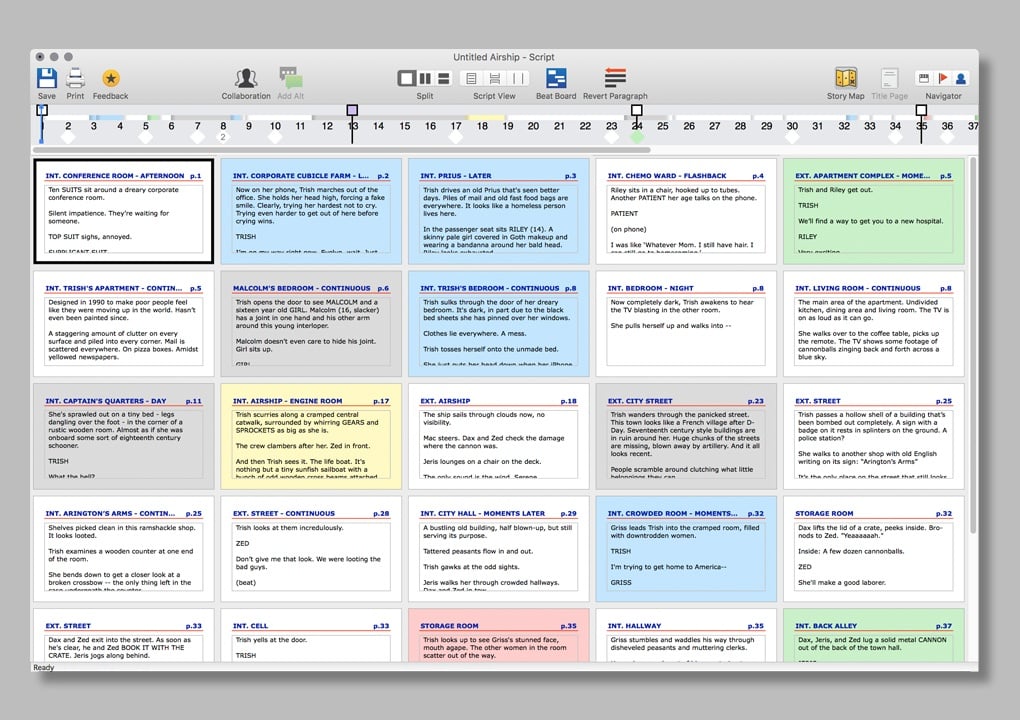Tech Tips: Beat Board vs Index Cards
Screenwriting Tips: Use Index Cards
Use index cards to work out the scenes in your script
Index cards (3×5 or 5×7 in size) are often used by screenwriters to plan out the sequence of events in their stories. Usually, a script has many different dramatic threads. The trick is how to weave them together over the timeline of the movie. For example, you might have several key challenges for your hero to overcome. You describe each of these on a different index card. You tack them up on the wall or lay them out on the table (or floor) and stand back and look at them. You see how the action seems to flow from one to another. Perhaps it seems that the ending is a bit anti-climactic, or that the build of dramatic tension isn’t right. So, you rearrange the order of the cards until you arrive at and order that feels the best.
Then, you may realize that you actually have a gap in the action that requires the creation of another challenge. So, looking at what comes before and what comes after, you determine the kind of action that is needed, and make a new card to fill the gap.
You might also realize that you have two challenges that are too much alike, or that would happen too close to each other, so you decide to lose one, or combine two into a single one that makes it all the stronger.
Then, you may know that you want a series of arguments between the hero and a love interest. In one creative session, you may work out how many arguments you want, and what each is about. You describe each of these arguments on a different index card.
As with the hero’s challenges, you tack up the cards and arrange them in the best possible order, filling gaps with new cards, and deleting or combining cards until the flow is right.
Since a movie generally focuses on one dramatic situation at a time, then intercuts among several different threads as necessary, your next job is to combine both the challenge thread and the argument thread into the overall timeline of your script.
You might decide to start with the first challenge card, then go to the first argument, and alternate. Or you might start with the first argument, have a second argument, and then two challenges in a row.
There are no “rules” as to how the two threads of cards should be shuffled together. It is purely a choice of how you wish to impact your audience.
You may even find that once you have blended the two threads into a single timeline, that combination highlights the need for an additional challenge or another argument, or perhaps the removal of one or the other. You might even be able to see the need for a whole new thread that is suggested once the first two threads are combined. So you create a third set of index cards, put them in order, and then weave them into the other two.
In this manner, many screenwriters work out the basic beats and flow of their stories so they have a loose blueprint from which to write, and therefore don’t get stuck in a logistic corner, or an emotional dead end.



Comments
Post a Comment